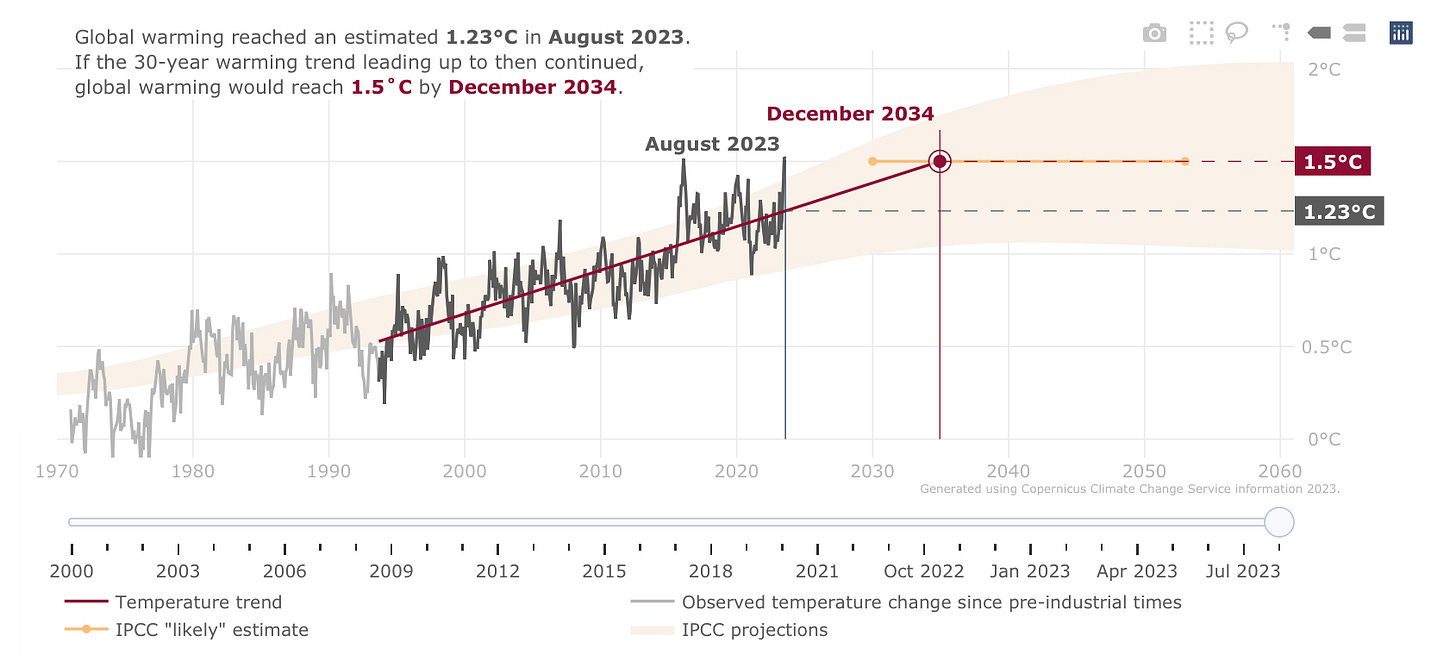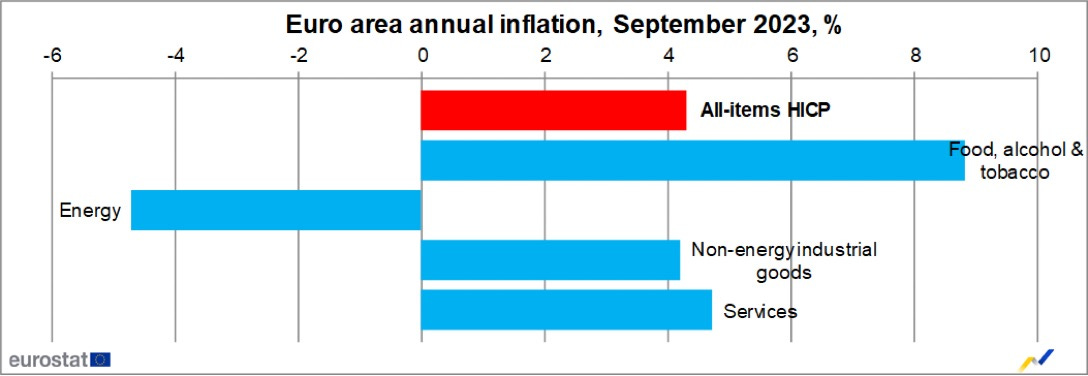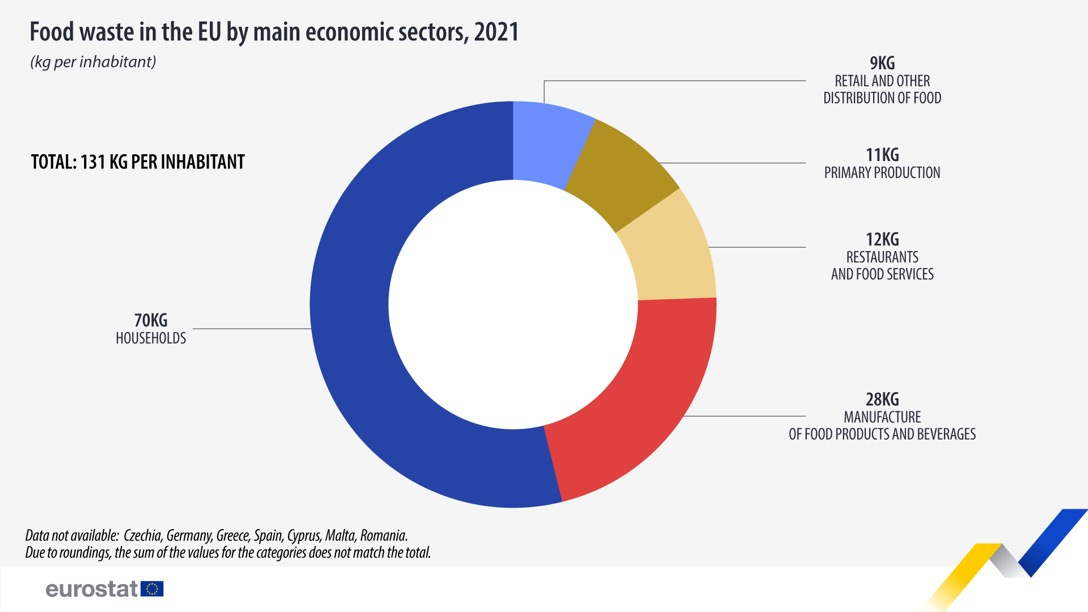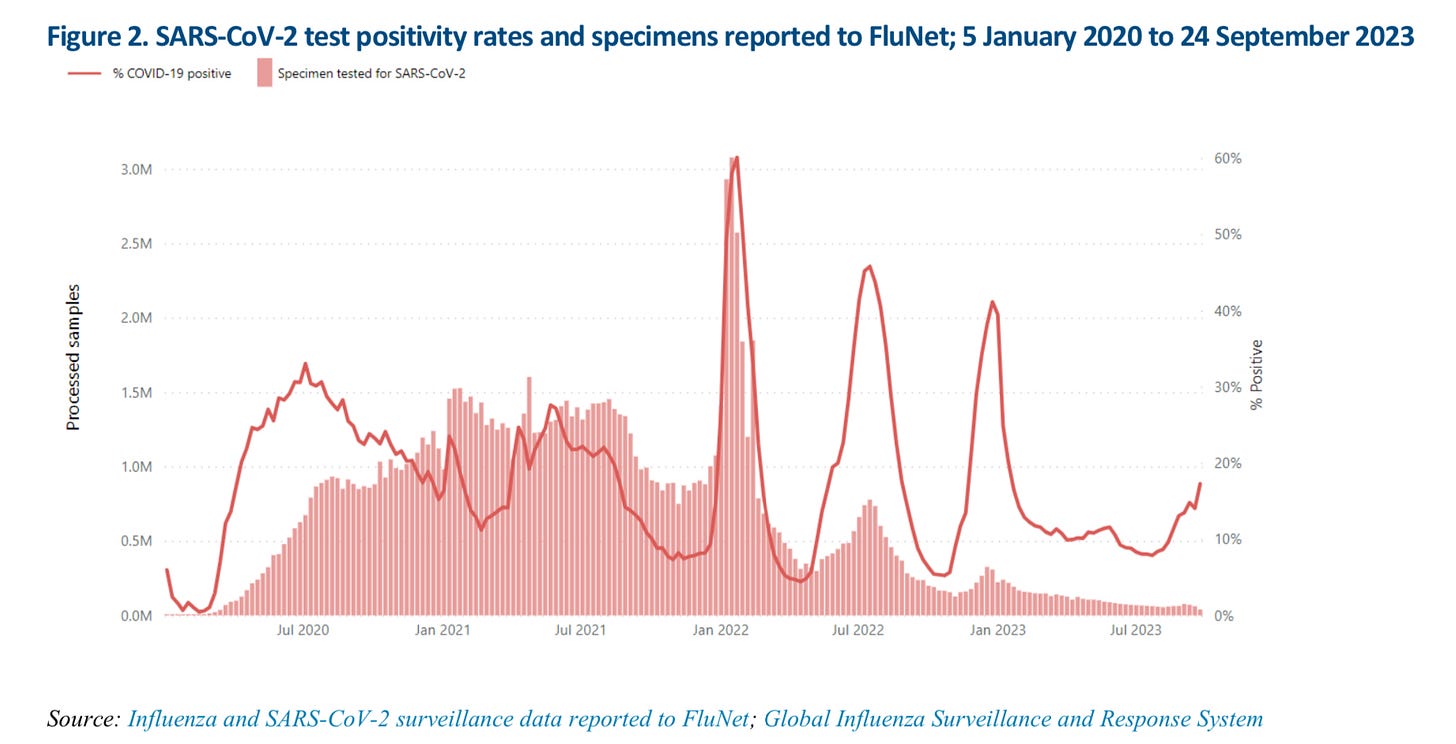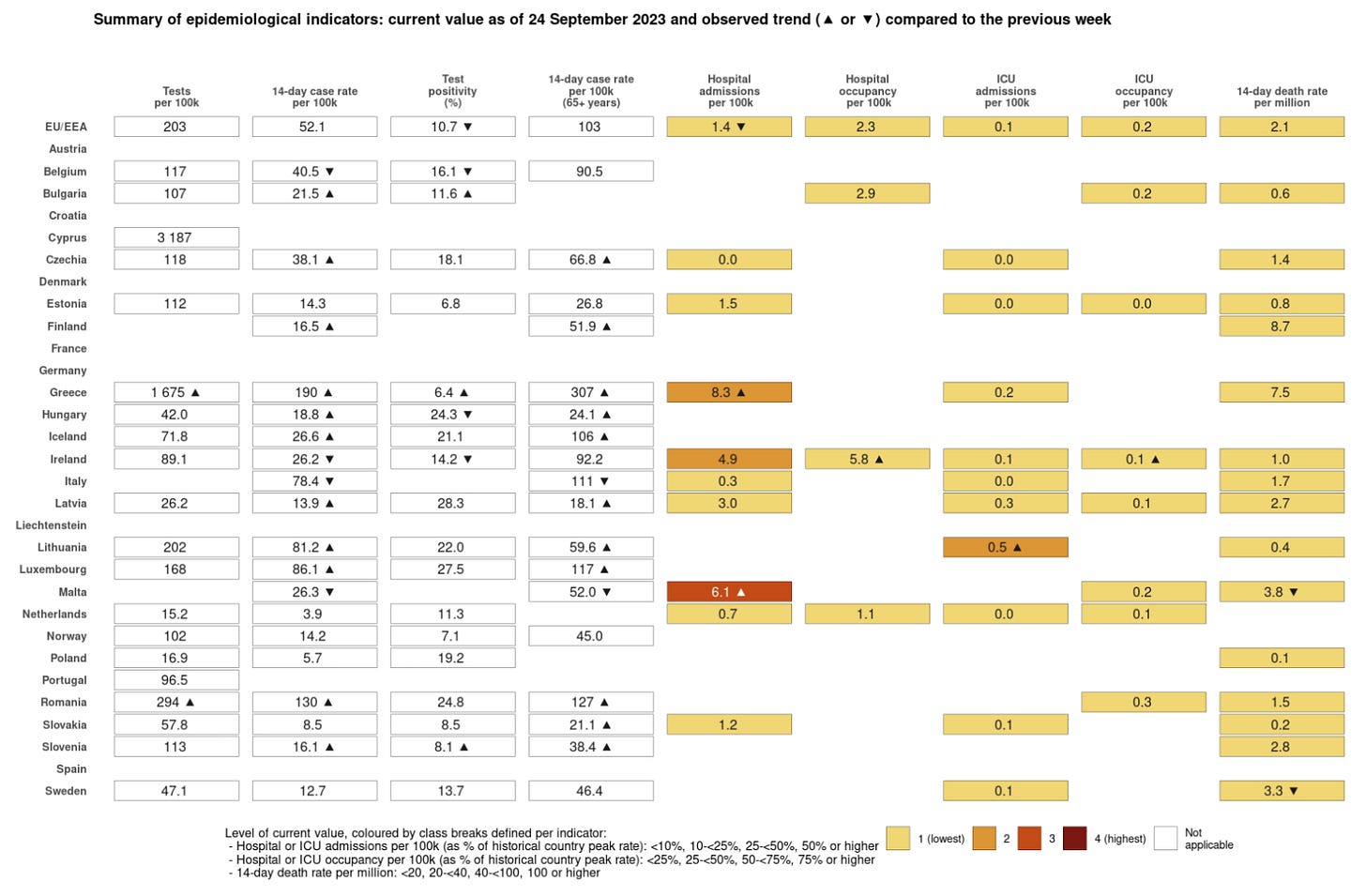🇩🇰 ☔️
Brace for rain today. The Danish Meteorological Institute has issued a heavy rain warning for most of the country. The agency says a low-pressure system will sweep in on Tuesday evening. But it will push a front ahead of it that could bring heavy rain across Denmark by Monday night. DMI says some parts of the country could see up to 40 millimeters of rainfall.
🍃Environment & Energy⚡️
🇩🇰 🇸🇪 🇫🇮 🇩🇪 🇵🇱 🇪🇪 🇱🇻 🇱🇹
European countries bordering the Baltic Sea, one of the most polluted in Europe, have signed a declaration to tackle some of the most significant pollution issues in the Baltic to try and clean it up.
Danish Environment Minister Magnus Heunicke:
"We have a joint obligation to ensure the Baltic Sea is in better condition and clean up the sins of the past. No country can solve the challenges in the marine environment in the Baltic Sea alone. Therefore, it is important that we have a broad and ambitious collaboration, where we work towards a common goal, namely that the Baltic Sea must be cleaned up.”
The signatory countries Denmark, Sweden, Finland, Germany, Poland, Estonia, Latvia and Lithuania, have focused on several key challenges. One of the biggest is to map all the WWII ammunition that lies on the sea floor and then figure out a way to clean it up. There is an estimated 300,000 tons of ammunition on the Baltic sea floor and the issue is an environmental time bomb. Saltwater is corroding away the casings around those munitions and releasing more and more of the toxic chemicals inside every year. On top of that, there is an estimated 11,000 tons of weaponized poisonous gases in sunken German ships lying on the seabed.
“With the new declaration, we are putting a renewed focus on ammunition on the seabed in the Baltic Sea. There is no doubt that the dumped ammunition is contaminating the marine environment, and therefore we need to learn more about how we can deal with all the ammunition without it having more negative consequences on the marine environment.”
If you want a better understanding of the toxic legacy left behind by the world wars in the Baltic and North Seas and why ammunition on the sea floor is a ticking time bomb watch the video below.
🇩🇰
Oxygen depletion in Danish inland waters has reached dire levels. This is according to a new report from the Danish National Center for the Environment and Energy, which says oxygen levels are so bad that marine life is either fleeing or dying out altogether.
Aarhus University Department of Ecoscience Senior Advisor Jens Würgler Hansen:
“Oxygen depletion has already reached catastrophic proportions. What is happening below the surface of the ocean right now is a tragedy for the marine environment. And it's not even over yet.”
The area facing catastrophic oxygen depletion is almost 7,500 square kilometers, an area larger than the island of Sjælland. The most critical areas are the southern and central Kattegat. But things are also dire in the Limfjorden and Mariager Fjord, the southern Little Belt, the southern Funen archipelago and the southeast Jutland fjords. And then there are large affected areas in the Fehmarn Belt and in the Baltic Sea.
“It is extremely serious. And everything is going in the wrong direction. That is the most frightening thing.”
Oxygen depletion happens when there is a decrease in the concentrations of dissolved oxygen in the marine environment. Fish and other aquatic life then flee the area while plants, mussels, and other invertebrates all die out.
The report says there are several causes for such a catastrophic situation. Chief among them is an overabundance of nutrients, the washing out of fertilizer residue from agricultural areas into the marine ecosystem. Another major contributor is bottom trawling fishing, along with climate change, and the rising temperature of ocean waters.
“The seabed is extremely depleted and it will take many years before it returns to being robust again because we have overloaded the sea for so many decades.”
Speaking to DR, Environment Minister Magnus Heunicke said that all remediation options are on the table.
“I can understand that there is impatience, but we are listening to the scientists who tell us that we cannot get life back in a few weeks. We use all tools to ensure that we reduce nitrogen and phosphorus emissions. What we have planned is to remove 10,000 tonnes of nitrogen.”
-
In an update on Denmark achieving its ambitious climate goals the Danish Ministry of Climate, Energy, and Supply states pretty clearly the toughest decisions are yet to come. Over the short term, the ministry says that Denmark has reduced its emissions by 49.3% below 1990 levels putting it tantalizingly close to reaching its 2025 goal of a 50% reduction of CO2 emissions.
After that things are going to get tougher. The climate report notes that the country is on pace to reach 63.1% emissions reductions by 2030, short of the 70% target. To reach its goal a further reduction of 5.4 million tonnes of greenhouse gas emissions must be found.
Climate, Energy and Supply Minister Lars Aagaard:
"We have to hit the finish line on both over the short and long term. We have already picked the low-hanging fruit, and the climate program clearly shows that we must reduce emissions in agriculture and transport in particular. This has to be done, and therefore we will come up with a proposal for a climate tax on agriculture on the back of the expert group's work. The exercise is complicated and must be done properly. But we have to reach our goal.”
The ministry says without any further reduction measures agriculture, forestry and transportation will account for almost 90% of Denmark's total greenhouse gas emissions by 2030.
-
The Danish government says it will soon table a plan to quadruple wind and solar-produced energy as it puts rocket boosters on the energy transition. in the last seven years, renewable energy sources have ramped up and currently produce 12 Terawatt hours of electricity. Another 41 TWh is forecast to be up and running by 2030.
Work is also underway for an exponential increase in transitioning homes away from harmful gas boilers. With 10,000 boilers removed since 2016, the state is estimating another 100,000 will be removed by 2030.
On the roadways, the number of zero-emission vehicles is forecast to increase by half a million between this year and 2030. In the last seven years, 140,000 green vehicles have hit the road in Denmark. Conversely, the Danish government plans to have over two million fewer fossil fuel vehicles on the road by 2030.
-
One Danish municipality has made a relatively simple change that has resulted in significant greenhouse gas emission reductions. Varde Kommune has switched 160 homes from having individual garbage bins to using 32 large buried containers. The lids on those containers have a sensor, which notifies the Kommune there they need to be emptied. Now city garbage trucks, which would usually drive set routes each week grabbing garbage containers that may be full or partially full, now only make a pick up when notified to do so.
District Manager Preben Nielsen spoke to DR:
“It is really smart. We can make a route plan so that we drive the fewest possible kilometers to empty our containers. We never drive out anymore and empty a half-full container.”
Calculations by the National Kommune Association show that the municipality has reduced 1.6 tonnes of CO2 emissions each year by making the change.
-
The Golden Eagles are making a comeback in Denmark. In the last Golden Eagle populations were declared as being vulnerable with little growth over the years. This appears to be changing for the better. The number of breeding pairs has begun to increase and the eagles, which have become a rare sight in skies over Denmark, are expanding to cover more territory.
If you want to follow the story of Denmark’s Golden Eagles more closely the University of Copenhagen is running a project to track the birds.
You can find it HERE.
🇪🇸
We are just one day into October and already Spain has recorded its hottest day ever for the month. Temperatures hit a sizzling 38.2 degrees in Montoro to start October off.
🌍
The EU Copernicus Climate Change Service has developed a tool that monitors the evolution of global air temperature over the last several decades up to the present. It uses that data to estimate when global warming will reach 1.5°C. The agency says that while that limit, set in the Paris climate agreement, may have felt a long way off then, if nothing changes at today’s pace it is forecast to arrive much sooner than you might think.
🇪🇺
Inflation in the EuroZone fell last month. European Union statistics agency, EuroStat, pegged inflation in September at 4.3%, which is down almost a full point from 5.2% in August. Food, alcohol, and tobacco products have the highest inflation at 8.8%, a drop from 9.7% in August, while energy dipped to -4.7%.
-
Food waste remains a serious issue in the EU. According to EuroStat 58.4 million tonnes of food waste was tossed out in 2021. Breaking that down per person across Europe that equals about 131 kilograms each. By far the biggest contributors to food waste were households, which accounted for 54% of all food waste across Europe. Food and drink manufacturers were the second highest offenders responsible for 21%.
🦠COVID🦠
🌎
There are some concerning increases in global COVID indicators in the now monthly World Health Organization update. It says overall infection numbers (over 685,000 in the last month have declined (-55%) and coronavirus fatalities are also down (-34%) with more than 1,900 more lives lost. But the global health agency cautions that those numbers are highly inaccurate as despite its pleas otherwise, countries continue to dismantle COVID reporting, testing, and surveillance regimes. Just 96 countries are reporting infection numbers now and only 37 are disclosing coronavirus death statistics.
“The recent declining trend in the number of new cases reported globally should be interpreted with caution due to decreased testing, sequencing, and reporting, alongside reporting delays in many countries. COVID remains a major threat, and WHO urges Member States to maintain, not dismantle, their established COVID infrastructure. It is crucial to sustain, inter alia, early warning, surveillance and reporting, variant tracking, early clinical care provision, administration of vaccine boosters to high-risk groups, improvements in ventilation, and regular communication.”
A more reliable indicator is COVID hospitalizations. But with just 50 countries reporting hospital admissions and a mere 39 divulging intensive care numbers even then we are only seeing a partial picture. The WHO says in the last 28 days there have been 95,999 new infection-related hospitalizations (+42%) and 985 new intensive care patients (+12%).
Of the just 26 countries consistently reporting new COVID hospitalizations, 12 saw admissions increases of over 20%. They are Czech Republic (+482%), Slovakia (+218%), Albania(+196%), Latvia (+136%), Lithuania (+110%), Netherlands (+106%), Chile (+100%), Honduras (+78%), the USA (+59%), Singapore (+36%), Greece (+34%), and Guatemala(+24%). The United States recorded the most overall hospitalizations of any country on earth with 74,593 new admissions.
Just 19 countries are regularly reporting intensive care numbers. Of those, five nations saw admissions increases of more than 20%. They are the Netherlands (+138%), Chile (+71%), Guatemala (+67%), Latvia (+50%), and Greece (+41%). Brazil had the highest number of overall ICU admissions with 550 new patients (+16%).
The global positivity percentage is 17% and has been increasing steadily in recent weeks.
On the variant front, the WHO says the EG.5 strain is dominant globally accounting for 33.6z of what few positive tests are still being sequenced. It says the variant is the most prevalent variant in 73 countries reporting data.
Zooming down to the regional level, the number of new infections increased in the Region of the Americas (+3%), the European region (+19%), and in the Eastern Mediterranean (+53%). COVID fatalities also rose in three regions, Africa (+33%), Eastern Mediterranean (+88%), and in South East Asia (+111%).
At the individual country level, South Korea continues to be a hot spot with 392,073 confirmed new infections (-70%) the most of any nation on earth. But coronavirus numbers are surging in Italy with 60,885 new cases (+84%). Numbers are also rising in Russia (+132%), and Mexico (+3%).
Australia is seeing rising COVID deaths with 734 more lives lost (+263%). Italy with 232 fatalities (+6%) is also a concern. It is worth noting that Italy also saw hospitalizations increase (+11%) as did ICU numbers (+9%).
🇪🇺
COVID and other respiratory infection indicators continue to rise in more than half of the European countries still reporting data. In the latest update from the European Centre for Disease Prevention and Control. The agency says its sentinel reporting system monitoring visits to a family doctor shows that the number of respiratory infection cases is increasing in most countries reporting data. Of those, respiratory infections are increasing by far the fastest among young children. That said, the ECDC says the numbers it is looking at are roughly comparable to what was seen in Europe at this point last year. Keep in mind that in the last testing and sequencing surveillance has more or less imploded across Europe. This means we are largely blind to the true infection picture.
The Czech Republic, Finland, Greece, Hungary, Iceland, Latvia, Lithuania, Luxembourg, Romania, and Slovenia, all reported increasing COVID infection numbers across all age groups. In the case of all ten countries, it has been 10 weeks and counting with increasing infection rates among vulnerable seniors. Bulgaria was the only country to report rising coronavirus cases but just among those under 65. While Slovakia is seeing infection activity increase among seniors over 65.
Greece and Malta reported climbing infection-related hospitalizations. The situation also remains serious in Ireland although its admission numbers stayed static week to week overall hospital occupancy both for general admissions and intensive care increased. That is an indicator that some COVID cases are requiring longer hospital stays for treatment. ICU admissions also rose in Lithuania.
There wasn’t a single European country to report any increase in overall coronavirus deaths but numbers remain on the high side in Finland and Greece. That said, the ECDC notes that four countries are reporting escalating fatality numbers among seniors and have been for three weeks running.
Just 17 countries met the ludicrously low threshold of submitting at least 10 sequenced positive test results over a 14-day period. Based on that incredibly narrow window XBB.1.5 remains dominant in Europe. Again the true variant picture remains unknown.
🇩🇰
Some good news from Denmark’s Statens Serum Institute as fall and winter COVID vaccination efforts begin. Newly formulated bivalent vaccines targeting the XBB.1.5 variant should prove effective even against the concerning new BA.2.75 strain. A live virus study from the institute suggests that the level of BA.2.86 plasma neutralization is pretty comparable to XBB and EG.5.1 coronavirus strains.
SSI Director Henrik Ullum:
“New data from the Statens Serum Institute suggest cross-immunity between SARS-CoV-2 Omicron variants XBB.1.5 and the new highly mutated BA.2.86. Good news as the 2023 vaccines are updated to XBB.1.5.”
The findings are in line with the results of other studies.
-
As of yesterday (Sunday), anyone eligible for a COVID booster dose and an influenza vaccination can now get inoculated. Region Hovedstaden says it is operating vaccination centers in seven of the region’s hospitals, and at one health center, and in addition, vaccinations can also be administered at 85 pharmacies. Vaccinations are by appointment only at the region’s hospitals.
The capital region will also vaccinate people with mobility issues or other challenges who cannot travel in their own homes. This is coordinated by the municipality and the person’s home care provider.
The region says that many of those who are eligible to be vaccinated have already booked appointments but there are still “many available appointments” over the next few weeks.
You can see an interactive map of all the vaccination sites in Denmark HERE.
Capital Region Director Anne Skriver Andersen:
“Again this year, we are offering vaccinations against influenza and COVID to the region's elderly and most vulnerable citizens. There has already been great interest in vaccination, and many have already booked an appointment, but I can assure you that there are appointments for everyone in the target group. So if you can't find an appointment in the first few days of October, you can try the following week at one of the many vaccination sites that are distributed throughout the region.”
Region Hovedstaden has set a goal to get the vast majority of the people in vaccination target groups inoculated within the first eight weeks. Both COVID boosters and influenza vaccinations will be available until January 15.
As a reminder, in Denmark, those eligible for COVID booster dose and a flu shot are:
All seniors 65 and older.
Pregnant women in the 2nd and 3rd trimesters.
Other people under 65 who are in high-risk or vulnerable populations
People in high-risk and vulnerable populations like those who are immunocompromised must make a vaccination appointment themselves. Invitations to make a vaccination appointment are NOT being sent to this group.
Also, children between two and six years old can get a pediatric flu shot given as a nasal spray.
🇳🇴
A study from the Norwegian Institute of Public Health has found that people dealing with mental health illnesses or respiratory challenges before the COVID pandemic had a much higher chance of being diagnosed with long-COVID.
Researchers used the robust data registries in Norway to track 214,667 people between the ages of 30 to 70 who had a PCR test confirmed coronavirus infection. They were followed over the first two years of the pandemic with visits to the Doctor for any long-COVID symptoms for an 180-day period after infection recovery.
Senior Adviser Bjørn-Atle Reme:
“We found that health service use linked to psychological, respiratory, and non-specific health complaints in the years before the pandemic was associated with an increased risk of doctor-diagnosed long-COVID after recovering from infection. We also found that individuals infected with the first virus variant [The Wuhan strain] had a higher risk of long-COVID.”
The study also found an increased risk of long-COVID among women and people who are middle-aged.
“While the risk was higher among women and the middle-aged, we found no clear difference in the prevalence of long-COVID after infection across social backgrounds linked to education level or income.”
The study’s findings imply that a simple checklist with yes or no questions could help determine who might need early referral for long-COVID treatment or rehabilitation. But the study also admits it has some weaknesses. Namely it is based on people themselves choosing to go to a doctor for diagnosis and treatment. Not everyone will choose to do that. There was also a lot of uncertainty early in the pandemic among doctors on how to diagnose long-COVID, which could further muddy the waters.
💉 🦠
For two years now pregnant women in the 2nd and 3rd trimesters have been recommended to get COVID vaccinations and now a new study shows the protection vaccination gives to their babies. 716 hospitalized infants took part In a study published in Morbidity and Mortality Weekly Report. Some of their mothers were vaccinated (22%) and some were not (28%). The study found that of the 50 newborns requiring life support, the mothers of 42 of those infants were not vaccinated.
Vaccine efficacy against infection-related hospitalization was 54% for infants less than three months old. Although that slipped to 35% by six months that is when a child could receive their own vaccination.
“These findings indicate that maternal vaccination during pregnancy could help prevent COVID-related hospitalization in infants too young to be vaccinated, particularly during the first 3 months of life. Expectant mothers should be counseled to remain current with COVID vaccination to protect themselves and their infants from hospitalization and severe outcomes associated with COVID."
But another study in the same publication also found that vaccination rates for both influenza and COVID inoculations were much too low. Just 27.3% of pregnant women had a bivalent COVID vaccination before or during pregnancy. That was based on a survey response involving 1,814 women who had been pregnant in the four months prior to the study,
"Maternal vaccination coverage remains suboptimal. Culturally relevant vaccination recommendations from health care providers are critical to improving vaccination coverage, decreasing persistent disparities in vaccination coverage, combatting increases in vaccine hesitancy observed since the start of the COVID pandemic."
🇺🇦/ 🇷🇺 War
🇳🇴/ 🇷🇺
As of tomorrow (Tuesday), Norway will be in compliance with its European Union neighbours in banning all vehicles with Russian license plates or registration from entering the country. Norway joins Finland, Poland, and all three Baltic states in enacting the ban. Blocking Russian vehicles from crossing into Europe was in previous European sanctions but is only now being followed through on by the EU.
🇱🇹/ 🇷🇺
Lithuania is taking matters a step further. Not only is the country e forcing a ban on all vehicles registered in Russia or having Russian license plates it is also going after vehicles already in the EU. Lithuanian authorities have given all Russian cars that entered the country, before the ban was implemented on September 11, six months from their date of entry to return to Russia. If they don’t the vehicles will be impounded.
🇹🇷/ 🇸🇪
Turkey continues to resent the democratic right of freedom of expression as tensions continue to simmer with Sweden. The Turkish government is outraged over a demonstration against the Turkish government that took place outside the country’s embassy in Stockholm over the weekend. Turkey’s Ministry of Foreign Affairs writes in a press release that it condemns the demonstration “in the strongest possible terms.” It accuses demonstrators of targeting Turkish President Recep Tayyip Erdogan saying "The Turkish public expects Sweden to prevent systematic actions that insult our elected leaders, as well as ongoing terrorist propaganda activities."
In Turkey, federal laws allow the government strict control over content in media and online. Anyone deemed to be posting insulting or subversive content can face heavy punishment including jail time.
🇪🇺🇺🇦
Europe will continue to support Ukraine in every way it can. That was the message from European Union Foreign Affairs High Representative Josep Borell who paid a visit to Kyiv on Sunday.
“Ukraine needs more capacities and needs them faster. We are preparing long-term security commitments for Ukraine.”
Borrell met with Ukraine’s new Defense Minister during his visit. One of the big issues on the table remains the ammunition supply to Ukrainian troops.
🇫🇷 🇺🇦
France will help Ukraine replace old and broken equipment and offer innovations to help Ukrainian troops in their battle against Russia. French Defense Minister, Sebastien Lecornu was in Ukraine over the weekend and said that France will directly link French manufacturers to the Ukrainian army to help with drone technologies, robotics, military equipment, and artificial intelligence.
During his visit, Lecornu said that this is not a war that will be won anytime soon.
“By definition, a counteroffensive on a 1,200-kilometer long front takes time, so we need patience, confidence, and endurance.”
🇺🇦
Things on the weapons supply front are taking the next logical step in Ukraine. With supplies of military equipment and ammunition at or nearing exhaustion in the EU an effort is now underway to increase domestic weapons and ammunition production within Ukraine. Ukrainian President Volodymyr Zelenskyy hosted a conference over the weekend with representatives from over 30 countries with the goal of developing a modern defense industry. In order to attract western weapons makers to Ukraine the country will create special fiscal incentives.
🇩🇰The Week Ahead Round Up🇩🇰
Tuesday, October 3
A new sitting of the Danish parliament (Folketinget) begins. The new session is preceded by a traditional church service at Christiansborg. The Humanist Society will also hold a secular service at the nearby Johan Borups High School. The new sitting then gets underway at noon with an opening speech by Prime Minister Mette Frederiksen.
The traditional service begins at 10:00 a.m. and the secular one follows at 11:00 a.m.
-
FC Copenhagen will play Germany’s Bayern Munich in a match in the group stage of the Champions League at Parken Arena in the Danish capital.
The game begins at 9:00 p.m.
You can buy tickets HERE.
Thursday, October 5
The Danish Road Directorate will open the Nordhavn tunnel construction site in Copenhagen to reporters and the public. Construction of the tunnel is expected to be completed in 2027. Once finished some 8,200 cars a day are forecast to use it.
If you want to take a tour through the site meet at Café Sundet at Svaneknoppen 2 at 4:00 p.m.
-
Denmark’s Queen Margrethe II will attend the opening of the ‘Ehrengard’ exhibit at the Karen Blixen Museum in Copenhagen. The Queen’s artistry is on display including costume sketches and costumes she made for the film.
Fun fact: The Queen is quite a noted artist and also a huge Lord of the Rings fan. In 1977 a special edition of J.R.R. Tolkien’s masterpiece was issued in Danish and English with illustrations by the Queen personally approved by Tolkien himself before to his death.
The exhibit opening takes place at 4:00 p.m. at the Karen Blixen Museum at Rungsted Strandvej 111.
Friday, October 6
Get your lederhosen out and begin working out your drinking arm because Midtjylland’s biggest Octoberfest begins today. The event boasts foaming draft beer in giant mugs, Wiener schnitzel, an 8-member band, and of course “the most beautiful Tyrolese girls.”
It is held at the KulturCenter in Skive and there are buses from Thisted and Nykøbing.
You can find out more HERE.
-
Avast ye landlubbers! The Knejpe Festival begins in Helsingør. Under this year’s theme of ‘Together at Sea’ you can expect shanti singing, sailors' music, and pirate bands. Knejpe is the Danish word for tavern and the festival tries to take attendees back to the days when taverns were bustling with sailors from all over the world.
The festival takes place on Friday and Saturday.
You can find all the information you need HERE.
-
The NATO Parliamentary Assembly will begin in Copenhagen. Over the three-day session parliamentarians from the 31 alliance member nations will meet to discuss security challenges facing the alliance and the war in Ukraine.
It will take place at the Danish Parliament buildings in Copenhagen.
-
The premier Scandinavian cultural conference Kulturekraft 2023 begins in Copenhagen
It is taking place at Industriens Hus on HC Andersens Boulevard 18.
It begins at 9:30 am. You can find out more HERE.
Saturday, October 7
Want to get your heavy metal on? Then head to Køge for the head banging metal festival.
More details HERE.
Sunday, October 8
A special performance called ‘October 43’ will be held at Det Kongelige Teater in Copenhagen. The performance will mark the 80th anniversary of Nazi occupiers trying to arrest and deport all Danish Jews during the Second World War. The event will include speeches, live music, and testimonials. Danish Prime Minister Mette Frederiksen and Queen Margrethe II will both attend.
It takes place at Kongens Nytorv 9 at 7:30 pm.
More information HERE.




